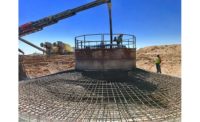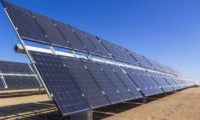The U.S. solar industry could see a 10% drop in installations over the next four years under a tariff on imported solar cells and panels approved on Jan. 22 by President Trump.
Starting in 15 days, the tariffs will exempt the first 2.5 GW of imports. After that, a 30% tariff will be in place for one year, followed by tariffs that decline 5% every year for four years, ending in 2022. The tariff was sought by solar-cell manufacturers Suniva and SolarWorld, which operate in the U.S. They claimed they were unfairly harmed by cheap Chinese imports.
The possibility of the tariff already has chilled 2018 solar installations, according to December testimony to the U.S. International Trade Commission. In November, developers paused work on a 100-MW solar farm in Texas because of trade proceedings.
According to GTM Research, the tariff is likely to result in a price increase of 10¢ to 15¢ per watt and will have the greatest impact on California, Texas, Florida, Georgia and South Carolina. Clearview Energy Partners says the tariff will increase the cost of distributed commercial solar projects by about 6%. The Solar Energy Industries Association says the tariff will result in the loss of 23,000 jobs.
“Government tariffs will increase the cost of solar and depress demand, which will reduce the orders we’re getting and cost manufacturing workers their jobs,” said Bill Vietas, president of RBI Solar, in a statement.
The tariffs could be challenged at the World Trade Organization, and the U.S. trade representative says he will continue discussions with China about the tariffs. China supplies about 70% of all the solar cells and panels in the world.





Post a comment to this article
Report Abusive Comment